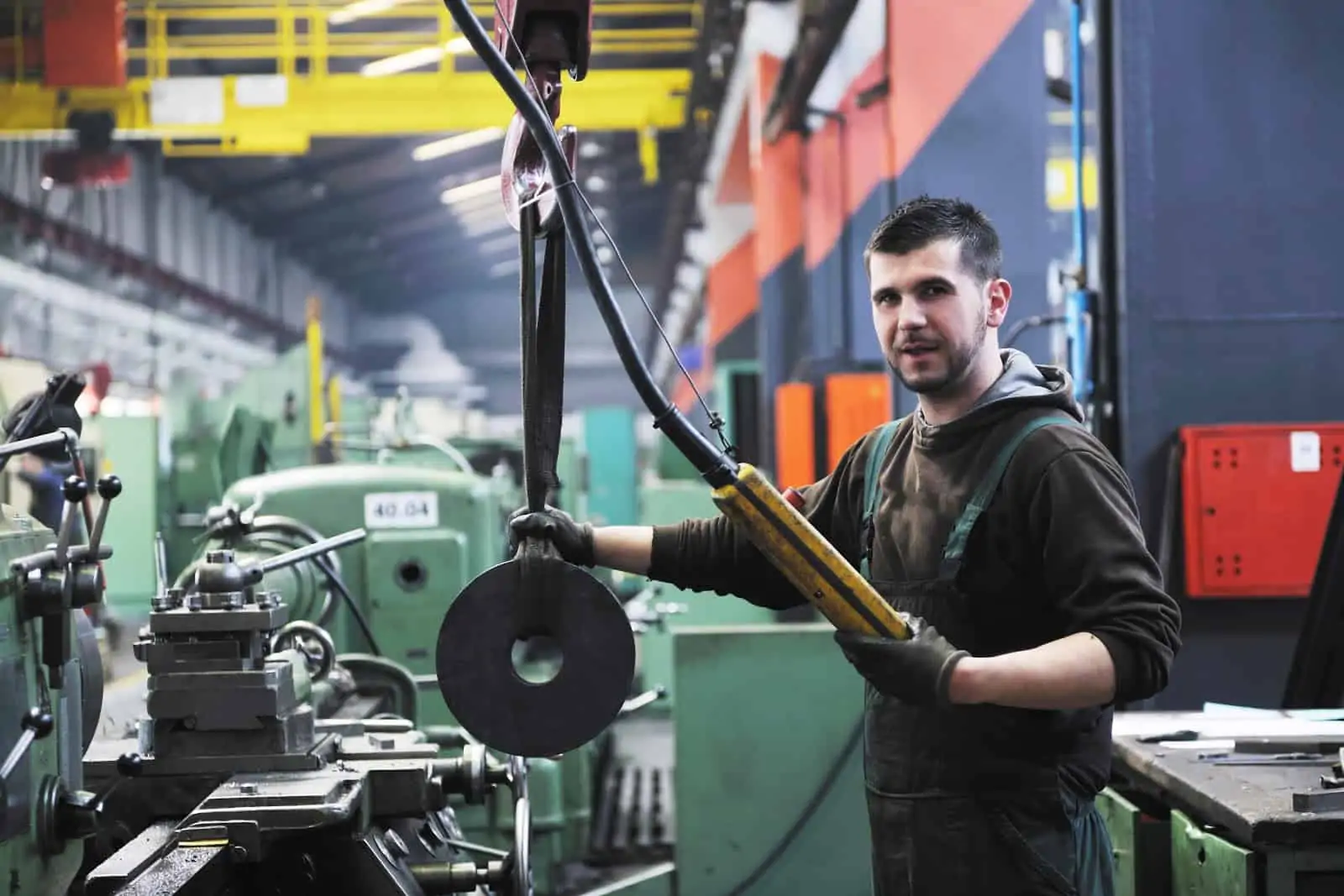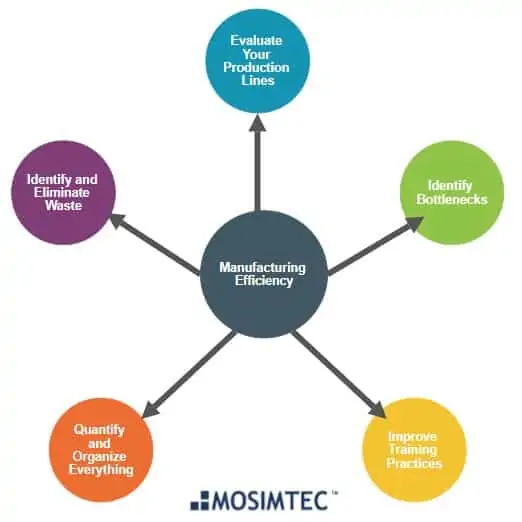
Regardless of your industry, improving efficiency is of paramount importance.
After all, it can mean cutting down on costs, maximizing employee time, and in the case of manufacturing, improving throughput.
Cutting-edge manufacturing firms have always sought new methods for boosting efficiency in order to improve their bottom lines. In fact, since 1987, output per hour for workers in the manufacturing sector has increased by over 2.5 times.
But the landscape is always changing, and firms looking to stay ahead of the competition must constantly reinvent themselves.
How to Define Manufacturing Efficiency
First, you must define what manufacturing efficiency means to your individual firm.
Consider this definition of production efficiency from Investopedia:
“Efficient production is achieved when a product is created at its lowest average total cost; production efficiency measures whether the economy is producing as much as possible without wasting precious resources.”
However, production efficiency in practice may mean something different for two different firms.
For example, you may believe that production efficiency means that your production lines are completing more projects, and you relay that information to your employees. From then on, they understand that any bonuses or performance indicators are subject to that standard.
By making that decision, you may see production output increase by a significant amount. But, you may also see an increase in defects and returns as a result.
You must weigh what is most important for your business.
5 Ways to Improve Manufacturing Efficiency
Below, we explore five areas of your business that you can improve upon in order to improve manufacturing efficiency.
4 Big Disadvantages of Lean Manufacturing – A Criticism of Six Sigma’s Approach
1. Identify and Eliminate Waste
Waste is a broad term. It can mean anything from employee hours, energy, materials, etc. Specific to manufacturing, one of the biggest sources is material waste.
Here are a couple ways you can identify and eliminate ways:
- Short-term: Identify material processes to catch excess material.
- Each of your processes creates some variation of waste. Identify which processes are creating the most waste and optimize them to bring waste down to an acceptable level.
- Short-term: Identify scraps and factory returns for recycling.
- Your excess waste can be recycled into new materials. Even if that isn’t the case, you could turn a profit by selling it to someone who can make use of it.
- Long-term: Create less waste with new operational practices and equipment.
- While identifying where you are creating the most waste, you will find operations that in the long-term, can be improved upon. This could mean anything from adopting new equipment that requires fewer materials to designing new parts that improve yield.
2. Evaluate Your Production Line
The production lines in your facilities are your bread and butter.
Throughput is the most important metric to track when studying your production lines. It essentially measures the average number of units being produced over a specific period of time. This allows you to immediately identify problems in your production line when throughput is not up to par on certain machines.
Additionally, you can track capacity utilization.
By calculating what each factory’s total manufacturing output capacity is, at any given moment, you can see what production lines are performing at their highest possible output. Combined with throughput, you have two ways to track production line efficiency.
To help identify the machines and operations that are slowing down both of these metrics, you may want to adopt simulation modelling as a business practice. Simulating the optimal performance of your production line will identify which of these processes needs improvement.
3. Identify Bottlenecks
While identifying any problems in your production line, you will naturally discover your largest bottlenecks in production.
Bottlenecks are the breakdowns in your production line, supply chain, or any business process that in turn prevents another process from accomplishing its function.
For example, in a factory, a specific machine could require maintenance, shutting down its operation for half of a day. Any process that requires that specific machine to be in operation is then stuck, unable to perform. That machine is then the bottleneck.
There are many forms of bottlenecks — an admin who is needed for approvals falling sick is another example.
Once you have identified your most common bottlenecks, you can work towards removing them and improving efficiency by eliminating excess downtime due to bottlenecks.
How Can Simulation Improve Throughput and Eliminate Bottlenecks?
4. Improving Training Practices
How your employees function ultimately determines efficiency throughout your whole organization. Untrained employees equal poor efficiency and vice versa.
Optimal employee performance starts with empowering every team member throughout the manufacturing process. This isn’t as simple as creating a booklet that someone trains off of — highly effective workers require supervised, on the job training.
But first, you must create standardized practices across your whole organization, from the top down. After all, you cannot expect each employee to be working efficiently when different managers institute different practices, and the same task is tackled multiple ways.
Additionally, PWC suggests that in order to empower your employees to create sustainable efficiency, they should be asking themselves these questions:
- “Is what I’m doing now adding value, or am I just doing it because this is the way I’m supposed to do this?”
- “If I were the customer, would I pay money for the activities that I am engaged in?”
Give your employees agency to formulate ideas that can improve efficiency themselves. After all, no one will know the ins and outs of their specific operations better.
Read More About Manufacturing Efficiency:
- How to Find (and Eradicate) Bottlenecks in Manufacturing
- 4 Big Disadvantages of Lean Manufacturing — A Criticism of Six Sigma’s Approach
- Walmart’s Alphabot Powered by MOSIMTEC Simulation Consulting
5. Focus on Quantifying and Organizing Every Aspect of the Workplace
You’d be surprised how inefficient your organization can be simply due to poor organization habits.
For example, you may be losing precious time on a production line for no reason other than that a tool that someone must regularly use is on the opposite end of the factory.
Or, your file system, whether it be through Google Drive or otherwise, requires employees to spend unnecessary time searching for documents in a cacophony of folders.
First, you must quantify every aspect of your business. Whether you do this with a point value or dollar value, every aspect of your manufacturing process must be quantified. Immediately, this will give you insight into what works and what doesn’t.
Second, everything must be organized. From the factory floor to head office, you do not want to let inefficiencies appear simply because of disorganization.
Quantifying and organizing your manufacturing process may be two separate activities, but they both accomplish the same goal: long-term manufacturing efficiency.
